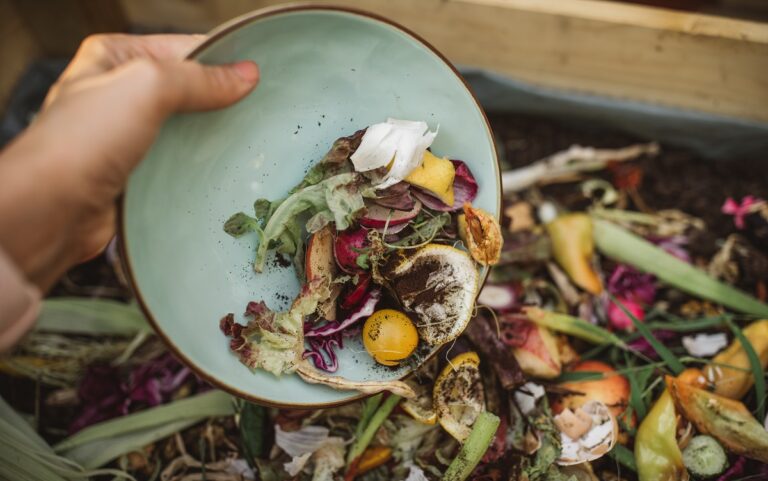In Los Angeles, the lights are blazing at Food Forward’s Pit Stop warehouse. Big rigs line up out front, waiting their turn to back up to the busy loading dock. Forklifts zip around, transferring pallets of donated produce like asparagus, lettuce, strawberries, purple potatoes, green beans and heirloom tomatoes from one truck to another destined for local nonprofits. In this article we talk about How LA Leftover Produce Nourishes the City’s Hungry.
According to Los Angeles Time, a nonprofit on a mission to rescue surplus fruits and vegetables that would otherwise go to waste and get it to hunger relief organizations across Southern California. With highly perishable donations arriving daily, everyone moves fast here. An average of 250,000 pounds or 125 tons of produce passes through this warehouse every single day.
Connecting Abundance to Need
The goal is simple: intercept nutritious food before it’s discarded and connect it with nonprofits serving those in need. Food Forward partners with some 250 groups to distribute produce in 13 Southern and Central California counties, plus seven other states when donations exceed regional capacity.
Recipient organizations get all this bounty for free and agree to pass it on at no cost as well, without requiring things like prayers, donations or club memberships in return.
Even in the early morning darkness, Food Forward driver Lupe “Papi” Rodriguez is all smiles as he prepares to collect another round of donated goods. “I enjoy my work,” he says. “It’s a beautiful job, because you get to help people too.”
From Backyard Fruit Trees to Wholesale Giants
Food Forward’s produce recovery operation grew out of modest beginnings 15 years ago. At the time, photographer and future founder Rick Nahmias found inspiration while caring for his elderly dog and coping with disappointment in politics. During their neighborhood walks in San Fernando, Nahmias noticed unpicked fruit overflowing in residents’ yards. With hunger and food waste both urgent issues, redistributing this overlooked abundance seemed like a tangible way to make a positive difference.
Nahmias posted a Craigslist ad seeking volunteers to harvest fruit for donation. A few kindred spirits responded, and over the next months the newly formed group collected and shared over 800 pounds. Seeing the impact and forging meaningful connections in service to others convinced these initial volunteers to establish an ongoing gleaning initiative.
With a small newspaper article attracting grant funding in late 2009, Nahmias’ weekend fruit picking crews formally organized into a nonprofit called Food Forward. For the first years, volunteers harvested unwanted fruit from backyards and orchards across Los Angeles for direct donation to community feeding programs.
Connecting with Farmers Markets
By 2012, the scope increased to include recovering and redistributing unsold produce from farmers markets. Building these relationships kept good food out of the landfill while better meeting recipient groups’ storage limits and clients’ preferences. What started with the iconic Santa Monica Farmers Market now encompasses post-market salvagings at 16 total venues.
Wholesale Recovery
In 2014, Food Forward took their next big leap into wholesale produce recovery. Despite initial challenges securing trucks, equipment and vendor cooperation, the nonprofit exceeded their first-year weight goal nearly tenfold by rescuing over 4 million pounds of surplus.
A Decade of Growth
Fast forward to today, and you’ll now find Food Forward’s distinctive truck and electric cab hauling in up to 80 million pounds per year donated by corporate distributors and shippers. In 2023, the organization distributed a record-setting 87 million pounds on a budget of $6.3 million. That massive impact comes at an operating cost of just $.07 per pound.
Powered by a small staff and over 2,000 volunteers, Food Forward also sets bold targets for expansion. Their current goal, boosted by White House recognition, is recovering 90 million pounds of produce in 2023 with sights set on 100 million by 2025. Financial support comes from foundation grants as well as individual donations ranging from $5 to over $1 million.
No Time to Waste
Back at Food Forward’s buzzing warehouse, driver Papi heads out once again into the crisp morning air. Inside, warehouse manager Leo Paz warmly congratulates a newer partner organization that’s just upgraded to make bigger pickups using Food Forward’s wholesale distribution.
Karlen Nurijanyan beams with pride seeing his first pallet-loaded truck. As a formerly impoverished college student, he founded nonprofit Student LunchBox in 2020 to bring free groceries and other essentials to students living below the poverty line. In the past week alone, his small but dedicated team distributed 15,000 pounds of produce and other aid to over 4,000 students at 10 area colleges.
Nurijanyan credits Food Forward’s donations and mentorship with helping the grassroots effort gain credibility to attract funding for expansion. This year, they’re adding clothing and hygiene kits to further meet urgent student needs.
It’s these powerful stories and human connections that compel Food Forward staff like Leo Paz. By cultivating individual relationships with partner groups, growers, shippers and funders, the produce recovery program has grown exponentially while staying true to its original grassroots spirit.
Gleaning Community
Food Forward also continues direct harvesting through their extensive gleaning network powered by dedicated volunteers. Coming up in June, the nonprofit invites newcomers to get involved hands-on during their ZestFest event celebrating 15 years of backyard fruit picking.
Sharing Abundance
Starting with neighbors sharing extra oranges, Food Forward now moves millions of pounds of leftovers from farms and warehouses onto the plates of the food insecure. After years at the helm, even founder Rick Nahmias is taking a short sabbatical to recharge and envision future opportunities to increase the organization’s reach.
He emphasizes that the “share the abundance” motto goes beyond donated kale and zucchini to encompass personal assets like time, money and compassion. Nahmias explains, “We all have abundance – we just need to find out what it is, and give it.” I sincerely hope you find this “How LA Leftover Produce Nourishes the City’s Hungry? Find Out here” article helpful.

Julio Figueroa is a seasoned chef with over 12 years of experience in fine dining. He holds a degree in Culinary Arts from Le Cordon Bleu and is passionate about culinary innovation. As the lead contributor to chefdecuisinelosangeles.com, Julio shares his expertise and unique recipes with food enthusiasts. Connect with him on Instagram for more culinary inspiration.

